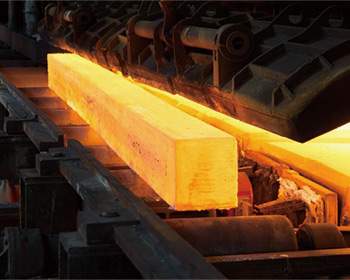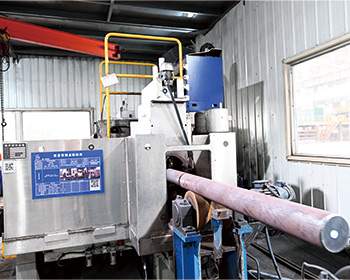
Understanding the Properties of 4140 Heat Treated Steel
Introduction
Steel, an alloy of iron and carbon, has been the backbone of industrialization and modern construction due to its strength and versatility. Among the many types of steel, 4140 heat treated steel stands out for its exceptional performance characteristics. This alloy is renowned for its toughness, wear resistance, and ability to withstand high temperatures, making it a popular choice for a variety of applications in the aerospace, automotive, and heavy equipment industries. This comprehensive guide aims to explore the properties, heat treatment processes, and applications of 4140 heat treated steel, providing valuable insights for engineers, manufacturers, and anyone interested in the material properties of steel.
Table of Contents
The Composition of 4140 Steel

Chemical Composition
4140 steel is a type of chromium-molybdenum steel that contains chromium and molybdenum as its main alloying elements. The typical chemical composition includes:
- Carbon: 0.38-0.43%
- Manganese: 0.60-0.80%
- Phosphorus: Maximum 0.035%
- Sulfur: Maximum 0.040%
- Silicon: 0.15-0.30%
- Chromium: 0.85-1.10%
- Molybdenum: 0.20-0.30%
Microstructure
The microstructure of 4140 steel is primarily composed of ferrite and pearlite. Heat treatment processes can alter this microstructure, resulting in different properties such as increased hardness, strength, and toughness.
Heat Treatment Processes for 4140 Steel
Annealing
Annealing is the first step in the heat treatment process, where the steel is heated to a specific temperature and then slowly cooled. This process relieves internal stresses and makes the steel more ductile, facilitating further processing.
Quenching
Quenching involves heating the steel to a high temperature and then rapidly cooling it in oil or water. This process forms martensite, a very hard microstructure that increases the steel’s strength and wear resistance.
Tempering
Tempering is the final step in the heat treatment process, where the quenched steel is reheated to a lower temperature and then cooled. This process reduces the brittleness of the martensite and increases the steel’s toughness and ductility.
Properties of 4140 Heat Treated Steel
Tensile Strength
4140 heat treated steel exhibits a high tensile strength, typically ranging from 1000 to 1200 MPa, depending on the specific heat treatment process.
Yield Strength
The yield strength of 4140 steel is also high, ranging from 930 to 1100 MPa, which allows it to withstand significant loads without permanent deformation.
Hardness
Heat treatment can increase the hardness of 4140 steel to levels between 200 and 600 Brinell hardness (BHN), making it highly resistant to wear and abrasion.
Toughness
4140 steel is known for its excellent toughness, which is a measure of its ability to absorb energy and resist fracture. This property is crucial for applications where the steel may be subjected to impact loads.
Fatigue Resistance
4140 heat treated steel has good fatigue resistance, which is the ability to withstand repeated cyclic loading without failure. This makes it suitable for applications where the steel will experience ongoing stress and strain.
Applications of 4140 Heat Treated Steel
Aerospace Industry
4140 steel is used in the aerospace industry for components such as landing gear, shafts, and fasteners due to its high strength, toughness, and fatigue resistance.
Automotive Industry
In the automotive industry, 4140 steel is used for gears, axles, and suspension components where high strength and wear resistance are required.
Heavy Equipment
For heavy equipment such as construction machinery and mining equipment, 4140 steel is used in components that experience high loads and stresses, such as gears, bearings, and shafts.
Sporting Goods
4140 heat treated steel is also used in the manufacturing of high-quality sporting goods, such as golf club shafts and motorcycle frames, where a combination of strength, toughness, and flexibility is needed.
Technical Specifications and Comparison
| Property | 4140 Heat Treated Steel | Comparison Material |
|---|---|---|
| Tensile Strength | 1000-1200 MPa | 300-550 MPa |
| Yield Strength | 930-1100 MPa | 140-280 MPa |
| Hardness | 200-600 BHN | 130-170 BHN |
| Toughness | Excellent | Moderate |
| Fatigue Resistance | Good | Fair |
| Typical Applications | Aerospace, Automotive | General Construction |
Maintenance and Best Practices

Regular Inspection
Regular inspection of components made from 4140 heat treated steel is essential to identify signs of wear, corrosion, or fatigue, which can indicate the need for maintenance or replacement.
Protective Coatings
Applying protective coatings or treatments can help prevent corrosion and extend the lifespan of 4140 steel components, especially in harsh or aggressive environments.
Proper Design and Engineering
Ensuring that components are properly designed and engineered for the specific application is crucial. This includes considering factors such as load, stress, and temperature to select the appropriate heat treatment and processing methods.
Compliance with Standards
Adhering to industry standards and specifications for the use of 4140 heat treated steel can help ensure the safety, reliability, and performance of components and structures.
Conclusion
4140 heat treated steel is a versatile and high-performance material that offers a unique combination of strength, toughness, and wear resistance. Its applications span across various industries, where its properties are highly valued. Understanding the composition, heat treatment processes, and properties of 4140 steel is crucial for selecting and using this material effectively. This guide has provided a comprehensive overview of 4140 heat treated steel, ensuring that you have the knowledge to make informed decisions in your engineering and manufacturing projects.
FAQ
What is the difference between 4140 and 4340 steel?
While both are chromium-molybdenum steels, 4340 steel has a higher nickel content, which provides improved toughness and strength at elevated temperatures. 4140 steel is more commonly used for its balance of strength and toughness at room temperature.
Can 4140 steel be welded?
Yes, 4140 steel can be welded, but it requires preheating and post-weld heat treatment to avoid cracking and to restore its mechanical properties.
How does the heat treatment process affect the properties of 4140 steel?
Heat treatment, including quenching and tempering, significantly increases the hardness, strength, and wear resistance of 4140 steel, making it suitable for high-stress applications.
What are the common surface treatments for 4140 steel?
Common surface treatments include black oxide, zinc plating, and phosphate coatings, which can improve corrosion resistance and wear properties.
How do I choose the right heat treatment for my 4140 steel component?
The choice of heat treatment depends on the specific application and required properties. Consult with a metallurgist or materials engineer to determine the best heat treatment process for your needs.






